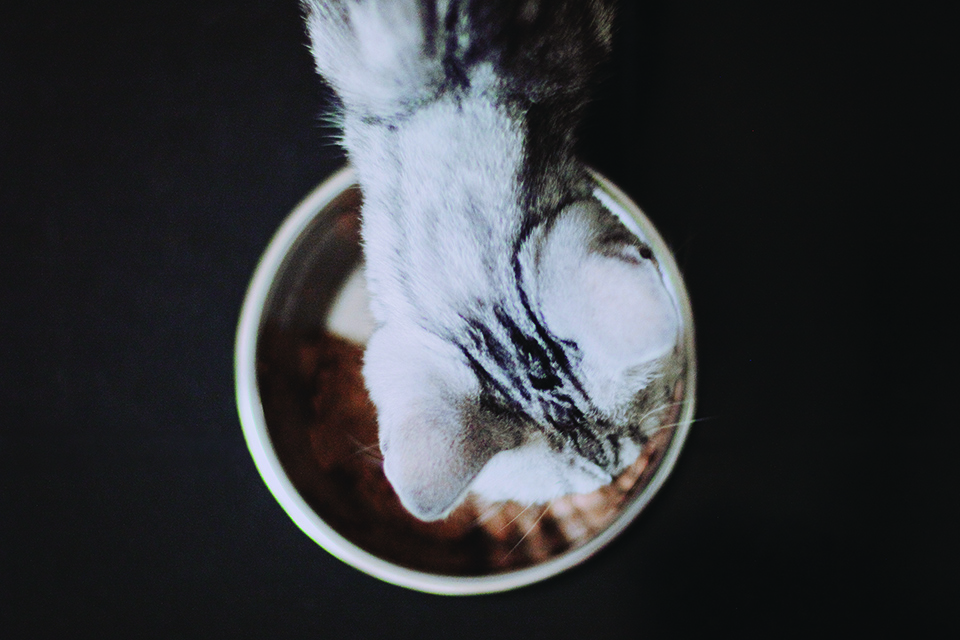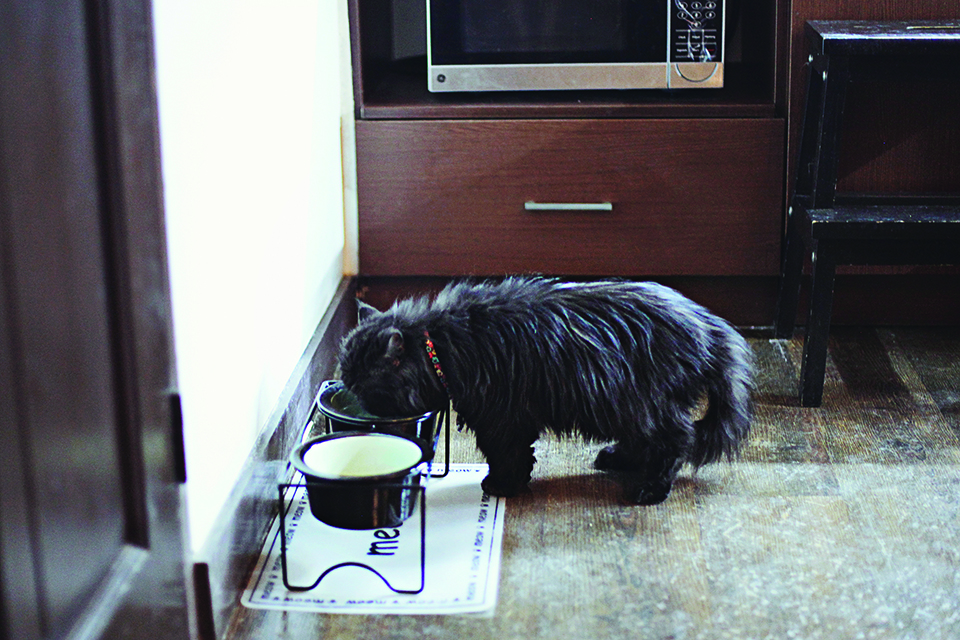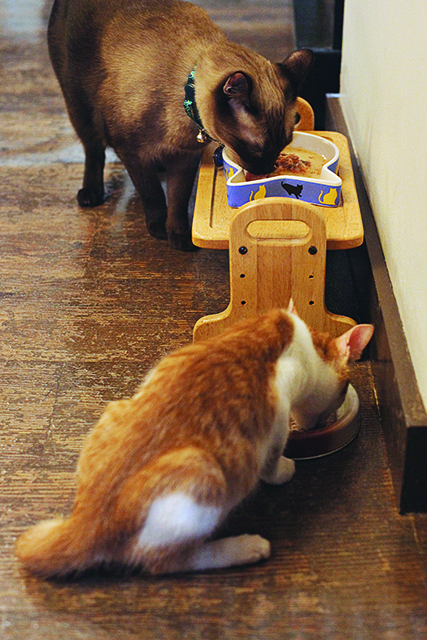One of the most basic needs of Cats is food. Each time we gaze into their shining eyes, we know they are always hoping for food. Whether we choose free-feeding or scheduled feeding, both have benefits and drawbacks worth considering for our beloved feline companion.
Age, health status, and activity level affect the nutritional requirements of Cats. It is always best to consult our most trusted veterinarian first to make sure we are meeting our Cat’s nutritional and caloric requirements.

PROS AND CONS OF FREE-FEEDING
Free-feeding is the method of filling a bowl with dry food and leaving it out for our Cat to eat as much and as frequent as they desire. The advantage it offers is that we do not have to worry about making it home the same time each day. This might work for people with busy schedules and those who often get stuck in traffic.
However, it comes with a few disadvantages.

STALE FOOD AIN’T FUN
Cats prefer fresh food. Leaving food out will make dry food stale and may just result in wastage as the kibbles at the bottom will not be as enticing. Food left out in the open eventually oxidizes and loses palatability and quality. Old uneaten kibbles need to be thrown out.
IT ATTRACTS OTHER ANIMALS
Having a filled bowl at all times might attract ants or other insects. This will contaminate your Cats’ food and welcome other animal guests into your home. Apart from that, wild animals and insects might bring germs and diseases to your Cat’s environment.
IT MIGHT MEAN SCRIMPING ON WET FOOD
Free-feeding cannot be done with wet food as it quickly spoils. Thus, our opportunity to provide our Cat better nutrition with wet food is not prioritized out of our own convenience.

FREE-FEEDING CAN LEAD TO POOR HEALTH
Having a dry food buffet puts our Cats at risk for developing obesity, urinary problems, and kidney disease. Some Cats eat out of boredom, while others may not be able to stop eating if food is always available.
MONITORING INTAKE BECOMES DIFFICULT
Families with more than one Cat may not be able to monitor the volume of food the felines are eating. Some Cats may also become dominant and eat the majority of the food.
PROS AND CONS OF SCHEDULED FEEDING
Meal feeding is the method of providing our Cat measured food at specific meal times, typically twice per day on a 12- hour cycle. One disadvantage is that Cats might beg for food in between meals. But if we are able to resist their charm knowing that they are not lacking nutrients, we can then train them and ourselves not to give in.
Here are some advantages to encourage you to try scheduled feeding.

THEY FINISH THEIR MEALS
We feel a sense of accomplishment when our Cat empties the bowl each meal knowing they have great appetite.
FRESH FOOD IS FUN!
We have great pride in knowing that we are serving fresh food for our Cat every time. After all, we work hard to provide them food.
BOUNDARIES ARE SET
When meals are scheduled, bowls are put away and cleaned. The Cats know that feeding time is over and they can do other activities, such as sleep and play.
NATURAL FELINE HABITS ARE MIMICKED
Scheduled feeding follows a Cat’s natural eating habits. Cats, being carnivores, are not meant to graze like their grass-eating counterparts.

A FELINE’S HEALTH IS IMPROVED
The time between meals enables our Cats’ bodies to naturally perform metabolic processes and properly digest food.
MEAL TIME IS A TIME TO BOND
Having a set time to provide their meals becomes a bonding experience with our Cats. They in turn pay attention to us more because they know we are the most valuable source of love and food.
MONITORING INTAKE IS A BREEZE
Food intake can be easily monitored. Any changes in appetite will serve as a helpful signal for us to discern if our Cat is not feeling well and needs medical attention.
GIVING MEDS BECOMES EASIER
This method works well for when our Cats need to be given medications as the routine will most likely match their feeding schedule as well.

VERDICT
Upon weighing our options with their respective advantages and disadvantages, it’s clear to see why cat experts and most veterinary professionals agree that scheduled feeding is the best method we can adopt for our Cats. As Cats thrive in routine and consistency, we are obliged to put in more effort. A schedule for our Cat means a schedule for us.
Cat are carnivores and are not designed by nature to graze and have a buffet all day. While it may be difficult at times, a good combination may work for some by using an automatic pet feeder that dispenses a small amount of food in between feedings.
It is, however, worth mentioning that multiple feline households require more than one automatic feeder. Hiring a pet sitter to feed our Cats on time is more beneficial instead of just leaving out large amounts of food, such as for days when we are on holiday or cannot be with them.

LITTLE SACRIFICE, BIG BENEFIT
Food intake is a valuable indicator of health for our Cats. We keep their best interests at heart by making sure they are eating right. What we feed and how we feed them makes a whole difference in the quality of life of our Cats. When our Cats are doing well, we are also able to relax more.
Sacrificing our convenience by adhering to scheduled feeding, no matter how hard some days can be, will always result to a win-win situation in the grand scheme of all things feline, which is a resounding yea.
Gia Lara is an experienced pet photographer, graphic artist, and content creator. She is widely interested in telling stories and expressing herself through visual art and the written word. More bite-size stories and photos of cute felines can be found on her Instagram @petograpiya.






